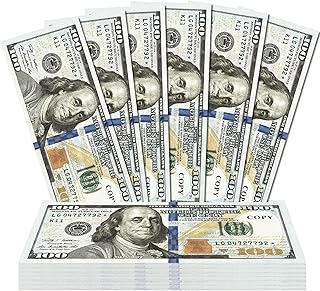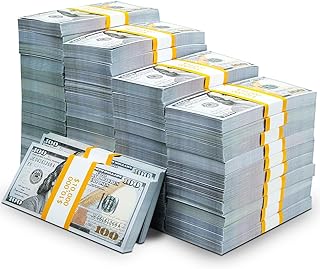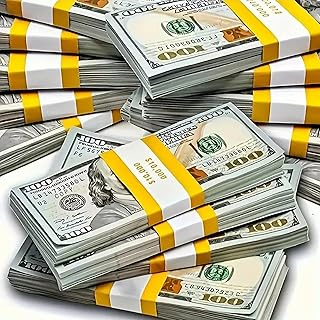|
The Australian $100 note has undergone several changes since it was first introduced in 1984. Initially issued as a paper note, the bill featured a portrait of Antarctic explorer Sir Douglas Mawson, with a mountain range and geological strata in the background. In 1996, the Reserve Bank of Australia transitioned to polymer notes, and the $100 bill was redesigned to feature portraits of Dame Nellie Melba and Sir John Monash, celebrating their contributions to music and military leadership, respectively. This new note also included images from World War I and depictions of John Simpson Kirkpatrick and his donkey. In 2020, the $100 bill changed again to include tactile features, making it accessible to people with blindness or low vision. Characteristics ValuesFirst issued 1984 First issued colour Turquoise-blue paper note First issued design Portrait of Antarctic explorer Sir Douglas Mawson, with a background of a mountain range with a geological strata format. A large diamond shape appears to the left of the main picture. Astronomer John Tebbutt is on the reverse, with a background of the observatory he built and a local church. First issued date 31 March 1984 Second issue colour Green polymer note Second issue design Portraits of soprano Dame Nellie Melba and engineer and First World War General Sir John Monash, along with images from the First World War and John Simpson Kirkpatrick and his donkey. Second issue date 15 May 1996 Third issue date 29 October 2020 Third issue design Raised bumps on the note's long edges to allow people who are blind or have low vision to easily identify it. Explore related products
$8.45
$12.99
$4.24 $6.49
$26.99
$5.5
$23.99 $29.99 What You'll Learn
The $100 note was introduced in Australia in 1984 as a paper note in response to inflation requiring larger denominations for transactions. The paper issue was released on Monday, March 31, 1984, and had a light turquoise-blue colour. It featured a portrait of Antarctic explorer Sir Douglas Mawson, with a mountain range and geological strata in the background. The reverse side of the note depicted astronomer John Tebbutt, along with a background of the observatory he built and a local church. The $100 note has undergone several changes since its introduction. In May 1996, a green polymer note was issued, featuring portraits of soprano Dame Nellie Melba and engineer, soldier, and First World War General Sir John Monash. This note also included images from the First World War, depicting John Simpson Kirkpatrick and his donkey. The Reserve Bank of Australia has continued to update the design of the $100 note, with the most recent version being released in October 2020. This new series of banknotes features different species of Australian wattle and native birds, with the $100 banknote showcasing the Acacia pycnantha and the Australian Masked Owl. The $100 note is a significant denomination in Australia, with 337 million notes in circulation as of June 2017, accounting for 22% of the total notes in circulation. The introduction of the $100 note in 1984 marked a shift towards larger denominations to accommodate inflation and has since become an essential part of Australia's currency system.
Rats and Disease: Australia's Health Risks You may want to see also
The Australian $100 note was first issued in 1984 as a paper note. Since its introduction, the $100 note has had two issues: paper and polymer. The first issue of the $100 note was a very light turquoise-blue paper note, released on 31 March 1984. It features a portrait of Antarctic explorer Sir Douglas Mawson, with a mountain range and geological strata in the background. The reverse side of the note depicts astronomer John Tebbutt, with his observatory and a local church. The second issue of the $100 note is a green polymer note, introduced in May 1996. It was designed by Bruce Stewart and features portraits of soprano Dame Nellie Melba and engineer, soldier, and civic leader Sir John Monash. The note also includes images from World War I and a depiction of John Simpson Kirkpatrick and his donkey. This note celebrates the contributions of these two outstanding Australians. The polymer issue of the $100 note was Australia's first polymer banknote and was designed to commemorate the bicentenary of European settlement in Australia. Polymer notes were chosen for their improved security features, and today, all Australian notes are made of polymer. The latest version of the $100 note was released into circulation on 29 October 2020. This new note includes a tactile feature, with raised bumps on its long edges, making it accessible to people who are blind or have low vision. This feature was first introduced on Australian banknotes in 2016, with the release of the new $5 note.
Carnival Spirit: What Free Drinks Are Offered? You may want to see also
The Australian $100 note was first issued in 1984 as a paper note. It featured a portrait of Antarctic explorer Sir Douglas Mawson and astronomer John Tebbutt on the reverse. In May 1996, a new $100 note was introduced, this time made of polymer. It featured portraits of Dame Nellie Melba and Sir John Monash. Dame Nellie Melba, born Helen Porter Mitchell in Melbourne in 1861, was an internationally renowned soprano. She performed in Australia, Europe, and the United States in the late 19th and early 20th centuries. Melba debuted in 1887 in Verdi's Rigoletto in Brussels and went on to sing in major cities like London, Paris, Milan, and New York. Her most famous role was Mimi in Puccini's La Bohème. She also wrote a singing tutorial, "The Melba Method," and was the first Australian to appear on the cover of Time magazine in 1927. Sir John Monash was an engineer, soldier, and civic leader. He played a significant role in the building construction industry and served as a commander in World War I. As Director-General of Repatriation and Demobilisation, he streamlined procedures for the repatriation of Australian soldiers and oversaw the Australian Imperial Forces Education Scheme, aiding soldiers' transition to civilian life. The $100 polymer note celebrates the contributions of these two outstanding Australians. It features images from World War I, including John Simpson Kirkpatrick and his donkey. The note also includes excerpts from Melba's autobiography, "Melodies and Memories," and a letter written by Monash.
Navigating Centrelink: A Guide to Applying for Australians You may want to see also Explore related products
$12.99
$8.99 $9.99
$14.99
$5.99 $7.99
$11.99
$8.99 $9.99
In October 2020, the Reserve Bank of Australia revealed an upgraded version of the $100 banknote, which began circulating from October 29, 2020. This new polymer banknote completes the micro-site's upgrade of Australia's banknote series to improve durability and security and follows the release of the $5, $10, $20, and $50 notes. The paper note features Antarctic explorer Sir Douglas Mawson, who led the Australasian Antarctic Expedition from 1911 to 1914 and made significant contributions to the field of geology and the study of the Antarctic region. Mawson is depicted alongside a stylised pattern of the Hymenolepis, a type of seaweed, on one side of the note. The reverse of the note features the Australian rock art engraving known as the Gwion Gwion figure, which dates back thousands of years and is found in Australia's Kimberley region. Sir Douglas Mawson was a prominent Antarctic explorer and scientist who played a crucial role in exploring and mapping the Antarctic terrain. Born in England in 1882, Mawson moved to Australia as a young man and became a naturalised Australian citizen. He joined Robert Falcon Scott's famous expedition to the Antarctic in 1907 and later led his own expedition, the Australasian Antarctic Expedition, from 1911 to 1914. Mawson and his team explored and mapped a significant portion of the Antarctic coast and interior, collecting extensive scientific data and specimens. Mawson's endurance and survival skills were tested during this expedition when a tragedy struck his team, and he had to trek alone for 30 miles to safety, hauling a sledge and suffering from starvation and frostbite. Mawson's endurance and scientific contributions during this expedition brought him international recognition. He became a prominent voice in the field of Antarctic exploration and science, advocating for the importance of understanding and protecting the Antarctic environment. Mawson's work provided valuable insights into geology, meteorology, biology, and the physical geography of the Antarctic region. He also made significant contributions to the study of glaciology, the behavior of ice, and the formation of glaciers, which continue to inform our understanding of the Antarctic ice sheets and their role in global climate patterns. Beyond his exploration and scientific achievements, Mawson played a pivotal role in the establishment and development of Australia's Antarctic program. He helped establish the Australian Antarctic Territory and paved the way for Australia's ongoing presence and leadership in Antarctic research and conservation. Mawson's legacy is honoured through various place names in Antarctica, including Mawson Coast, Mawson Peninsula, and Mawson Station, Australia's first permanent base on the continent. The inclusion of Mawson on the $100 note celebrates his enduring contribution to science, exploration, and Australia's connection to the Antarctic region. The design of the note also incorporates other security features, including a top-to-bottom window that contains intricate multi-coloured patterns and a reversing number that changes colour when the note is tilted. The note retains the traditional portraits of Sir John Monash on the obverse and Dame Nellie Melba on the reverse, along with existing security features such as the patch with a rolling colour effect, a fluorescent serial number, and microprinting. The upgraded $100 note continues to tell the story of Australian history and innovation and celebrates the significant contributions of Sir Douglas Mawson to Antarctic exploration and science.
Australian Citizens: University Education and Its Costs You may want to see also
The Australian $100 note has undergone several changes since its first issue in 1984. Initially, it was a light turquoise-blue paper note, featuring a portrait of Antarctic explorer Sir Douglas Mawson. In 1996, it transitioned to a green polymer note, depicting soprano Dame Nellie Melba and engineer and WWI General Sir John Monash. The note also included images from WWI, honouring John Simpson Kirkpatrick and his donkey. In 2020, the Reserve Bank of Australia (RBA) released the next generation $100 banknote, marking a significant milestone for accessibility. This new note is specifically designed to be accessible to people with low vision or blindness. It features raised bumps along its long edges, enabling individuals with visual impairments to easily identify the denomination. This tactile feature empowers those with low vision or blindness to independently identify and use cash, providing them with the same independence as the rest of the population when utilising cash in their daily lives. The inclusion of these tactile features on the $100 note completes the set, with all denominations of Australian banknotes now offering this accessibility aspect. The RBA has been committed to this initiative since 2016, when the $5 note became the first to introduce the tactile feature. Each year since, a new note with these features has been launched, with the $20 note being the most recent addition in 2019. The new $100 note not only celebrates the contributions of Dame Nellie Melba and Sir John Monash but also ensures that their achievements are accessible to all Australians, regardless of visual ability. This change is a testament to Australia's commitment to creating a more inclusive and accessible society, where people with disabilities can advocate for themselves and bring about positive change. The accessible $100 note is a powerful example of how organisations can work together to make a meaningful difference in the lives of those with disabilities, ensuring that all Australians can participate fully in their country's economy and society.
Applying to be a Doctor in Australia: A Guide You may want to see also Frequently asked questions
When was the Australian $100 bill first introduced?
The Australian $100 bill was first introduced in 1984 as a paper note.
What changes were made to the $100 bill in 1996?
In 1996, the $100 bill was changed from a paper note to a polymer note.
What features are on the $100 bill?
The $100 bill features the Acacia pycnantha and the Australian Masked Owl. It also includes portraits of Sir John Monash and Dame Nellie Melba.
Are there plans to abolish the $100 bill?
As of 2016, there were discussions about abolishing the $100 bill to close loopholes used by the black economy. However, the Reserve Bank of Australia has stated that there are no plans to do so. (责任编辑:) |














